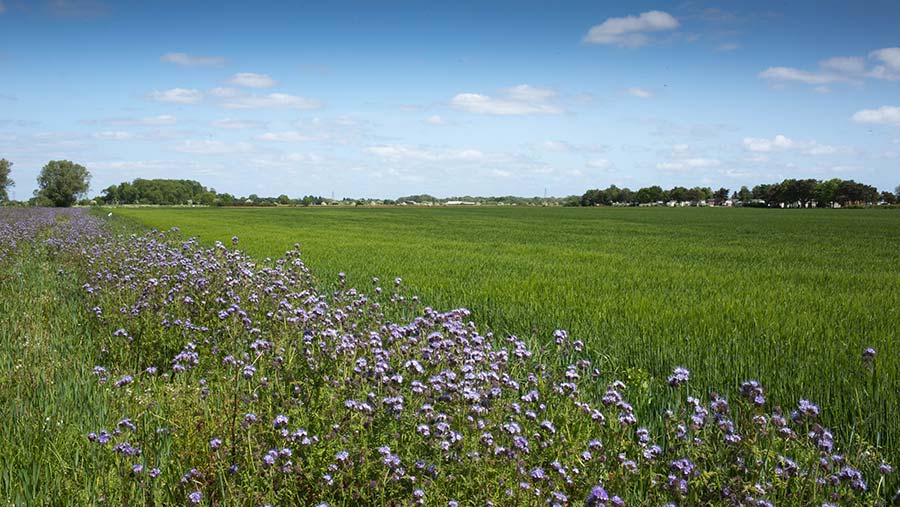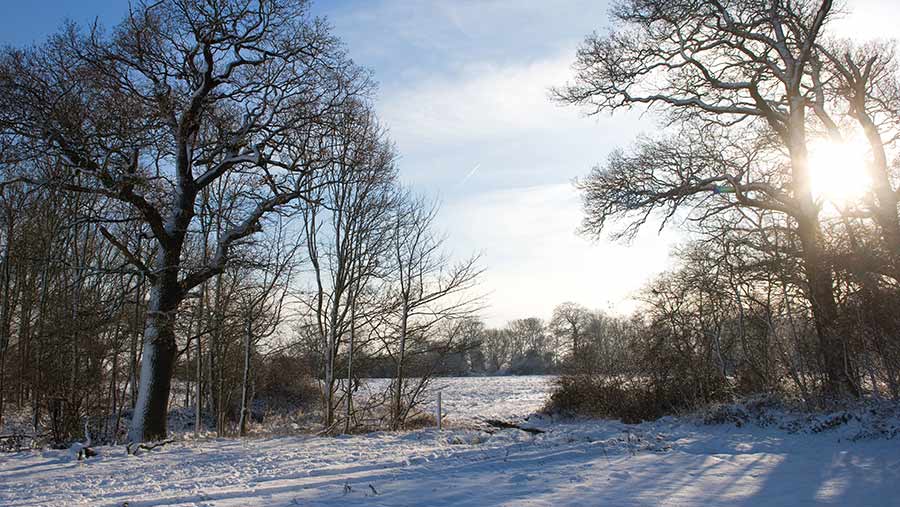Countryside Stewardship 2021: What farmers need to know
 © Tim Scrivener
© Tim Scrivener Farmers in England can take advantage of an improved Countryside Stewardship (CS) offer this year.
Applications opened on Tuesday (9 February) for Higher Tier, Mid Tier (including wildlife offers), new capital grants and woodland creation and maintenance.
Alice De Soer from Rural Response explains what’s new, why to apply and what to watch.
See also: Valuable funding on offer as Countryside Stewardship opens
Key changes
No Mid Tier capital-only agreements
It’s no longer possible to apply for capital-only agreements under Mid Tier. Instead there’s a new standalone capital grants package.
Mid Tier applications can still include management options and capital items. There are some new capital items to support improving air and water quality and help reduce ammonia emissions.
But there’s now a spending cap on Mid Tier capital items: £120,000 for air- and water-quality items and £50,000 for boundary items.
New capital grants
There’s a new standalone capital grants package to replace the hedgerows and boundaries capital grants and water capital only grants under Mid Tier.
Land parcels already in existing CS agreements aren’t usually eligible. An exception to this is land in a wildlife offer agreement, which can be used for capital grants at the same time.
There are three groups of capital items: boundaries, trees and orchards; water quality; and air quality, with 67 items available to select from.
The maximum grant threshold per application has increased from £10,000 to £60,000, but there’s a limit of £20,000 for each of the three groups. Apply for these online via the Rural Payments service.

© Tim Scrivener
No double-funding issues
There were 18 CS options that couldn’t overlap with land declared as a greening ecological focus area for the Basic Payment Scheme (BPS).
This was to avoid double funding, as you can’t be paid twice for doing the same thing. With the removal of the greening rules in England from 2021, double funding shouldn’t be an issue.
Educational access
The educational access option is now available under Mid Tier, as well as Higher Tier. This supports educational visits to farms by school pupils and “care farming” visits.
Expanded uplands options
The eligibility criteria for UP2 (management of rough grazing for birds) have been expanded. There are also three new upland wood pasture options.
New woodland creation and maintenance grant
This combines the previous woodland creation grant and the woodland creation maintenance payments.
There’s now one agreement that offers capital funding (18 items) for creating woodland, followed by maintenance payments once the capital works are completed, if you’re eligible. Available from 9 February; you can apply all year round.
Environmental outcome site visits
There will be environmental outcome site visits for domestic CS agreements, instead of inspections. These will assess how environmental aims are being delivered and check no prohibited activities are taking place.
It’s still important to keep the required records, as well as evidence to show you’ve carried out the required management in case the RPA needs more information.
No penalties for domestic CS agreements
Penalties will no longer be applied to CS agreements starting 1 January 2021 or later as they are under domestic control, not EU rules.
Payments may, however, still be withheld, reduced or recovered.
Reasons to apply to Countryside Stewardship this year
Basic Payment Scheme payments will start to reduce this year. Applying to CS will give some funding certainty as BPS is phased out 2021-27.
Mid Tier agreements last five years, starting from 1 January 2022. The first CS payment should be received from December 2022 onwards, to coincide with the second year of BPS payment reductions.
You can then evaluate what’s available under the new Environmental Land Management (ELM) scheme as more details are published to see if it better suits your business.
If a CS agreement starts on 1 January 2021 or later, you can still apply to the ELM scheme and, if accepted, terminate your CS agreement early without penalty at the end of an agreement year.
What to watch
Check land is mapped correctly
All the land parcels you’re including in a CS application must be registered with the RPA and linked to your single business identifier (SBI).
This means the land shows on your digital maps in the Rural Payments service (www.gov.uk/rural-payments – from “Business overview”, click on “Land” and then go to “View land”). The main things to check are:
- Permanent land parcel boundaries. This includes hedges you’re intending to use for CS options BE3 (management of hedgerows), BN5 (hedgerow laying) and BN6 (hedgerow coppicing).
- “Land cover” is shown correctly. This isn’t the same as the land use codes declared for your BPS application. It includes arable land, permanent grassland, permanent crops and non-agricultural area. Land cover is mapped, land use isn’t.
To register a land parcel or update your digital maps, use an RLE1 form (search “RLE1” on www.gov.uk), which can be emailed to the RPA.
Land use
If land parcels are included in a CS application this year that are also being used to claim BPS 2021, the RPA will check that the CS management option is compatible with the BPS 2021 land use code declared. That’s this year’s land use, even though the CS agreement doesn’t start until 1 January 2022.
Be aware that some CS grassland options can only be located on land declared with a permanent grassland land use.
There are also CS arable options that can only be placed on land declared with an arable land use. The land uses declared must correspond with the mapped “land cover”. For example, if the land use is wheat, the land cover must be mapped as arable.
Catchment sensitive farming officer approval
Certain management options or capital items relating to water or air quality are only available in a CS high-priority area for water or air quality (which you can find online at www.magic.gov.uk).
To include them, you must have catchment sensitive farming officer (CSFO) support. It’s important to contact your CSFO at least six weeks before you submit your CS application.
If you’re applying for the new capital grants, you’ll need to contact your CSFO by mid-March at the latest to meet 30 April 2021 application submission deadline.
Approval for priority habitats and species management options
Some Higher Tier management options for priority habitats and species are available in Mid Tier, but only if you’ve requested approval. To do this, phone the RPA on 03000 200 301 by 31 May 2021.
Key dates for 2021
The application window opened on 9 February. The table below shows the key deadlines.
A flexible application window for 2021 is being considered by Defra, but it’s not clear yet when that may be introduced. The advice is therefore to submit applications by the published deadlines.
|
|
Application pack request deadline |
Application submission deadline |
Agreement duration and start date |
Applications scored/ranked? |
|
Higher Tier |
31 March – online/paper |
30 April (initial application) |
Usually five years. Start 1 January 2022 |
Yes – competitive |
|
Mid Tier |
28 May – paper 30 June – online |
30 July |
Five years (capital items two years). Start 1 January 2022 |
Yes – competitive |
|
Wildlife offers |
28 May – paper Apply online up to 30 July |
30 July |
Five years (capital items two years). Start 1 January 2022 |
No – guaranteed |
|
New capital grants |
Apply online up to 30 April |
30 April |
Two years Start first of month after RPA checks done |
Yes – competitive |
